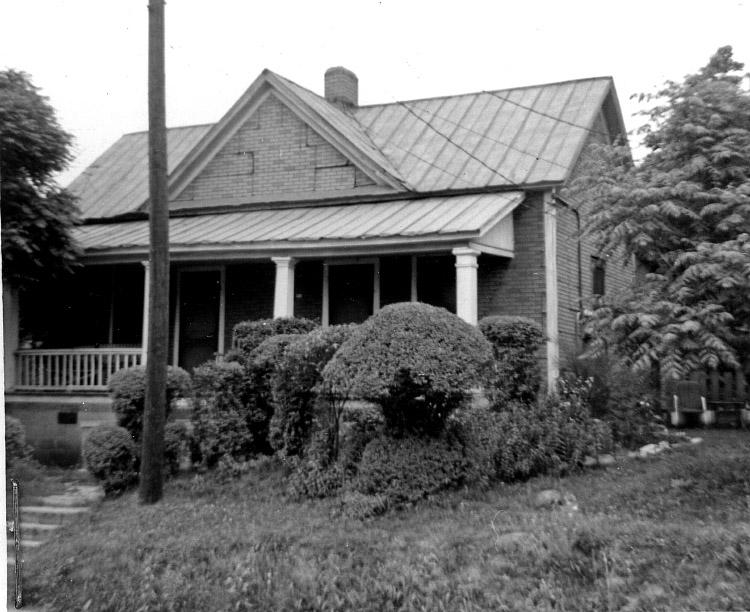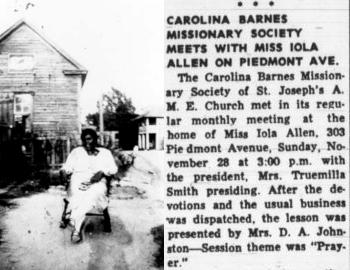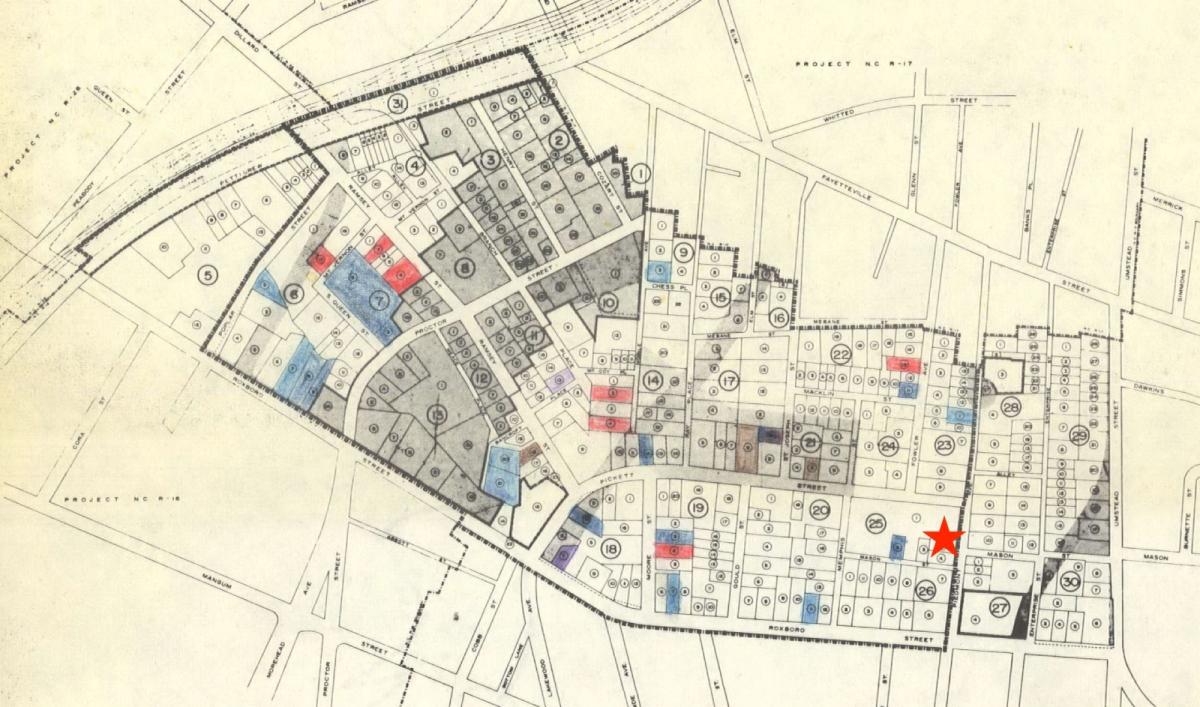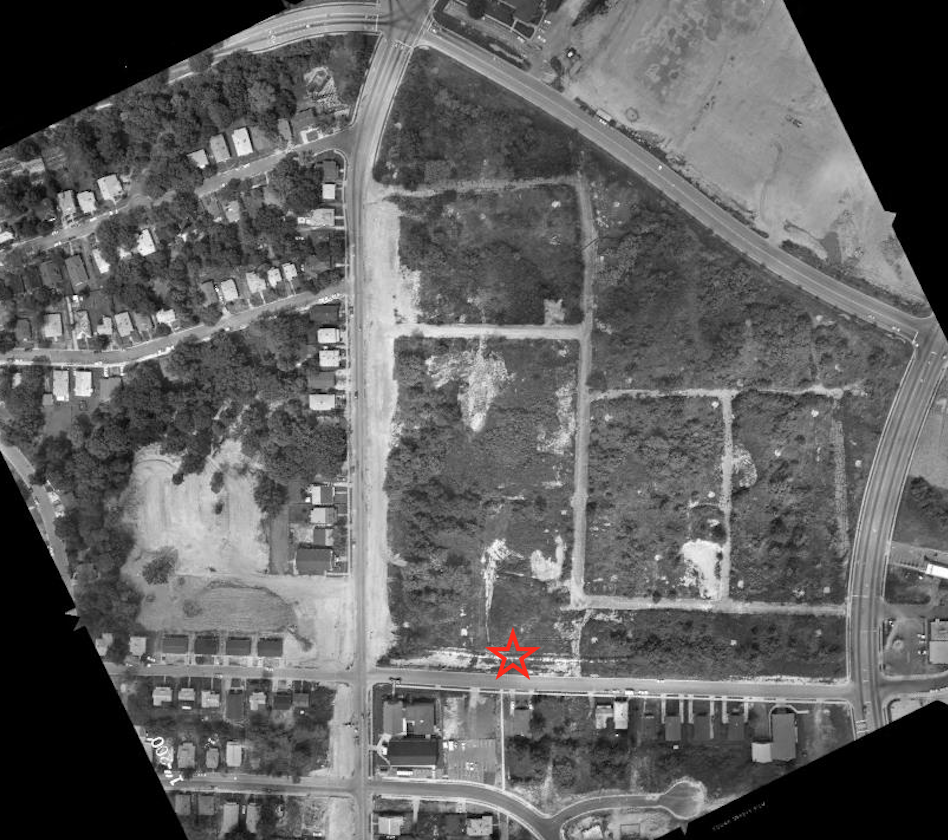June 1965 - Courtesy of Durham County Library, North Carolina Collection, Urban Renewal Records (online via DigitalNC)
Described by the appraiser facilitating its acquisition and demolition by the Durham Redevelopment Commission as a "duplex residence" in "fair" condition, 303 East Piedmont was the long-time home of Iola Cunningham Allen (1897-1988). Originally from Greensboro, her family appears to have relocated to Durham sometime in the 1910s. For decades until their deaths, Ms. Allen lived here with her mother, Daisy Allen (c.1875-1961), and grandmother, Laura Cunningham (c.1858-1933) - both widowed.
Iola remained in the house for more than half a century, eventually purchasing it from the landlord in 1951. Though she never married, hers was an active life in this part of Hayti. She is said to have worked as a cook in a nearby cafe, and was a longtime, active member of St. Joseph AME Church - just a few blocks to the northeast.
At left - Ms. Allen resting in her yard after work, c.1916 (Courtesy of Durham County Library, North Carolina Collection). Her home is visible behind her, as is the two-story structure at 404 East Piedmont in the distance. At right - clipping from a 1965 edition of The Carolina Times, reporting on a gathering of a church missionary group hosted by Ms. Allen at this house (available online via DigitalNC).
The 1966 appraisal document that accompanied the first picture above indicates that Allen "lives in one side and rents the other to [a] long time friend." This was likely the couple, John and Jennie Clifton, who appear in city directories as residents on the other half of the duplex almost immediately after she purchased the property in the 1950s. While Ms. Allen may have been the longest-tenured resident on her block, a significant portion of those living in the immediate vicinity - whether renters or owner-occupants - had put down roots before Urban Renewal set its sights on this part of Hayti.
A 1971-72 working copy of the Durham Redevelopment Commission boundary map for so-called Project Three - a vast area from Pettigrew in the north (at left here) to Piedmont in the south, Fayetteville on the east and South Roxboro on the west. Originally mapped in 1966, the various shading added here indicates the slow, parcel-by-parcel progress in land acquisition. The location of 303 East Piedmont Ave is indicated with a superimposed red star. Courtesy of Durham County Library, North Carolina Collection, Urban Renewal Records (online via DigitalNC).
A product of big ambitions, the erasure of Hayti was a tragedy so enormous that it can seem difficult to comprehend at the scale of individual human experience. At the same time, reference to what was lost (a vibrant, historic African American community) and what replaced it (a far cry from what was promised) has a way of compressing the agonizing timeline over which its dismantling unfolded. Like many of the homes added to Open Durham pages around Hayti, the initial version of this page estimated its demolition as unfolding between 1966-1970. In fact, the sad saga of the displacement of Iola Allen and so many of her neighbors started earlier and carried on much longer than this estimate indicates.
From the first conversations about Urban Renewal in the late 1950s, this area - at least what was clear to the south of the freeway's projected course - had been discussed for "rehabilitation" rather than demolition. By the mid-1960s that tune had changed, and Piedmont Avenue had the misfortune of falling right on the fault line, with everything to its north projected to be razed. That sentence was pronounced just as Project 1 (south of the mainline railroad around American Tobacco) and Project 2 (east of Fayetteville Street, including what became Fayette Place) proved such plans would indeed bring bulldozers, all contributing to a predictable spiral of disinvestment and depreciating property values.
Clipping from one of five grim pieces on the "Plight of Project III" that ran in the Durham Morning Herald newspaper, May 9-13, 1970. Preserved in Volume 5 of the Durham Urban Renewal Clippings in the County Library's North Carolina Collection (available online via DigitalNC)
Instead of a quick death blow to western Hayti, however, a combination of factors prevented large-scale acquisition of properties like the one owned by Ms. Allen until a final funding decision from HUD in late 1970. In the meantime, hers and hundreds of other households spent the better part of a decade in limbo while the community they called home died around them. Unpaved streets were not only cut off by the construction of the freeway and the rerouting of Fayetteville Street, many became impassable due to new drainage patterns from the raised road beds. Access issues went from nuisance to safety hazard when they prevented trash collectors and firefighters from reliably reaching parts of the area. One woman quoted anonymously in a five-part May 1970 Durham Morning Herald series on this disgrace had - like Iola Allen - "lived in the neighborhood nearly all her life," and knew first-hand what the promise of Urban Renewal had actually become: "It is a monster that destroys homes and lives."
It would be three more years until Ms. Allen finally sold her house to the Redevelopment Commission, her longtime neighbor at 301 East Piedmont following suit a couple months later in August 1973. Aerial photographs suggest demolition of these and many of the other later acquisitions did not begin until some time in 1974. A decade later, virtually nothing had filled the void where western Hayti once stood - just the extension of Lakewood Avenue to move motorists past the barren cityscape.
NCDOT aerial photograph from August 1984 (available via the NCDOT Historical Aerial Imagery Index). The former site of 303 East Piedmont Avenue is indicated with the red star.
Iola Cunningham Allen lived fifteen years after selling her longtime home here, before passing away at the age of 91. Services in her honor were held at the church where she had been an active member for decades, St. Joseph AME. Her funeral program - preserved in the Durham County Library's fantastic R Kelly Bryant Collection and available on DigitalNC - suggests she was known for great warmth, even being "affectionately called 'Bless Your Heart'."
"Everyone who knew her loved her dearly," the program concludes, and it seems she loved living on Hayti's Piedmont Avenue.






Add new comment
Log in or register to post comments.